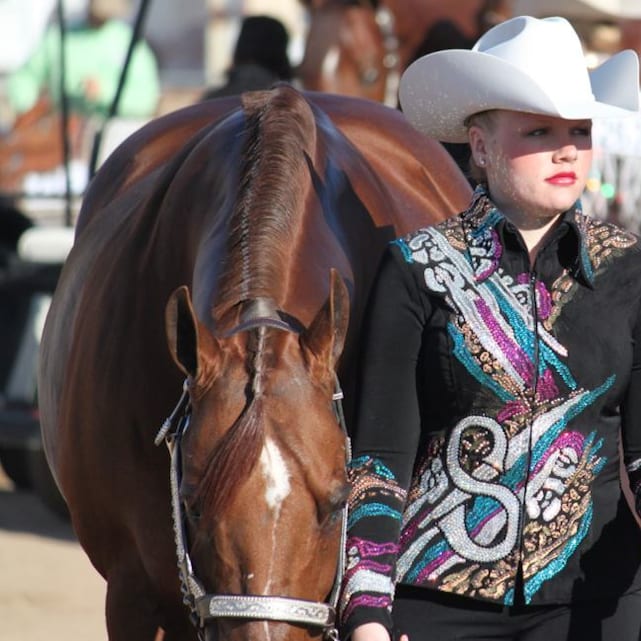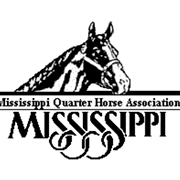You have made it to the final week of boot camp. Just when you feel ready for any little old thing your drill sergeant might throw at you, it’s finally time to take a break. This is not college – we do not, I repeat, do not, cram before an exam. If you have not been riding without stirrups, determined how many steps you need to take in order to stop even with the cone or figured out how to have the perfect lope departure, now is not the time.
This week you let muscles rest and recover. This is not the time to introduce new moves – not for you or your horse. This week, you put everything together, make sure that you and your horse are rested and prepared to peak at show time. If you have never done a flying lead change, ridden in a double bridle or put the chain over your horse’s nose, now is not the time to throw it at your horse. NOW is the time to trust your relationship, allow muscle memory to take over and build confidence by repeating what you know that you know.
This week you concentrate your efforts on putting things together. Finally you are ready to string together maneuvers and the elements required by patterns. This week you will ride and prepare as if at the show; warm up for ten minutes then ask for 100%. This week, if you do not have the results you desire, you return to the appropriate exercise to practice the parts that need improvement before attempting to string together all the right moves again, and on another day.
This week you do not stress your muscles and you do not put undue stress on your horse. In the final days of preparation pay particular attention to how your horse responds to your cues and reward accordingly. Take your horse away from his feed for a short time or saddle your horse then let him stand in the stall saddled before you ride. Ride two or three times in a day for short bursts or practice showmanship then stand for 20 minutes before testing your horse’s readiness in a mock pattern. This is the week that you test your horse’s ability to stay tuned into you and your ability to stay tuned into your horse!
Although you do not ask for 100% every day or every ride, you will challenge your horse to give you 100% of his or her attention for short periods to determine how to peak at show time. Your goal is to determine precisely how much pressure your horse can handle, how much prep time is needed, how he or she handles show ring circumstances as recreated at home
Showmanship Week Four
1. Start each day by picking a couple of exercises from your previous week’s work that pertain to a particular pattern you want to practice. For instance, looking at the 2014 AQHA Select World Championship Show patterns, the pattern started with a trot to a walk to a set up. Practice trotting to a walk then stop without setting up; then add the set up after perfecting the trot, walk, stop portion of your pattern. Click here to print out pattern.
2. On day two, practice walking to a stop in front of a cone. Setup for inspection then back up two to five horse lengths, whatever it takes to be satisfied with how your horse backs correctly, smoothly and in a straight line. Return to the start and practice the following steps: trot, walk, stop and set up in front of your cone, the judge. Wait 1 minute crossing from the near to the far side as if being inspected, then back until satisfied with quality of back and add the turn. Exit the turn at a walk and practice walking the corner. Return to the set up position, wait at least 30 seconds, and practice the back to the turn to the walk corner; trot then return to the setup position. Perfect this aspect of the pattern before moving on. Go to the start and practice from 1 – 4.
3. On day three practice coming out of your turns, the 2 ¼, then practice the walk corner, trot circle and the stop and set up at the end of the pattern. Make sure that you have your start cone set up and another cone to represents the judge. Practice the following: walk the corner; trot the circle and trot to a stop using your peripheral vision to determine where to stop. Do not allow your horse or yourself to slow as you approach your stop – practice accelerating to the end. Set up and move to the off side.
4. Practice the pattern in its entirety one time. Return to any area that failed to meet your standard of excellence then repeat the pattern a second time. Pay particular attention to the line of travel and to your horse’s anticipation of upcoming maneuvers. Determine where your horse is anticipating and getting ahead of you then do the opposite in those places in the pattern.
5. Practice only the portions of your pattern where you felt you and your horse fell short of meeting your expectations. Run through parts of the pattern that reflect the same but without any cones and perhaps in a different place in the arena.
6. Drill the specific parts of the pattern where you feel you and your horse most need the time. Do not drill the pattern itself, instead drill the aspects where you fall short, i.e. the trot to a walk, the back to a 2 ¼ turn, the trot circle, etc.
7. Warm up as if at the show, the pieces and parts. You will be happy that you practiced the pattern at home once at the show – especially if you never find arena time to practice the pattern in its entirety once at the show. Return to the aspects that fell short of your expectations. You are ready to go. Do not practice the entire pattern so much that you have your best pattern at home in the practice pen. Practice and preparation instill confidence and trust. You will rely on that trust once at the show.
Horsemanship & Equitation Week Four
This week you let your muscles take a rest. Continue to warm up without stirrups, in a two-point or in a forward position for 5 to 10 minutes alternating between the walk, the jog/trot and the lope/canter. But this week the hard-core time without stirrups is left behind. This week, like the showmanship, you string together parts of the pattern as expected or anticipated.
Dissect the pattern that you will have to perform just as we did for showmanship. Start at the very beginning, including the approach to cone 1 and work your way through the pattern taking two or three rides to graduate to riding the complete pattern.
Each day spend additional practice time working on the specific areas of the pattern where the performance was substandard. Recreate the specific conditions of the show arena as much as possible. Remember, your charge this week is to test your readiness – not to teach new maneuvers. It is too late to teach yourself or your horse to do a flying lead change if that is not already in your skill set.
Take your time working through every aspect of every transition, every maneuver and every circle. Repeat circles, spins or stops to perfect before moving on. Return to the start cone. Stand for a full minute with contact on the reins – as if you were waiting for the horse ahead of you to start. Then walk away from the cone and repeat this exercise. Only after your horse is completely comfortable with standing, waiting then walking away from the cone should you proceed to the next maneuver.
Posture yourself and your horse as if you were at the horse show standing at the start cone. Your goal this week is to anticipate how your horse will respond to your cues. You are trying to fine tune your communication, give your horse confidence and determine just how much practice you will need at the horse show. Remember to add in the waiting time. At the horse show, you may be lined up in a chute with no room or ability to do anything except stand or walk.
If you anticipate your class going at night, practice at night. If you anticipate having to ride twice before you show, ride three times in a short amount of time, returning to the stall in between rides. If you anticipate having to stand around the arena for an hour in preparation for show; ride at for an hour alternating between a leisure walk and light warm up then go ride your pattern as if you are showing.
This week riding is as much about getting you ready to deal with what might occur, as it is to prepare you for what you know will occur. Preparation, boot camp, is about exploring: what can go wrong, alternative solutions to problem, learning to anticipate and adapt to the ever-changing conditions of the show ring. That is what boot camp is all about – learning adaptability.
Remember, you do not get a pass on warming up and cooling down with good posturing exercises. Stand in your stirrups, stretch your heels and keep your upper body tall and limber. Never stop training – it is the key to better riding and leads to more gratifying results – in all that you do.









